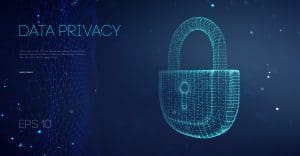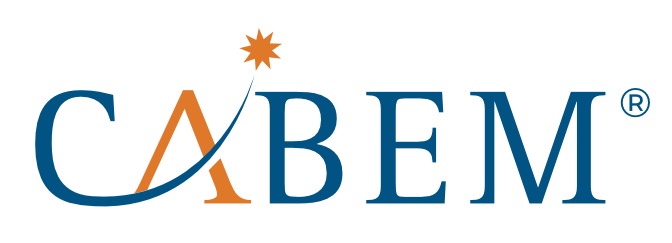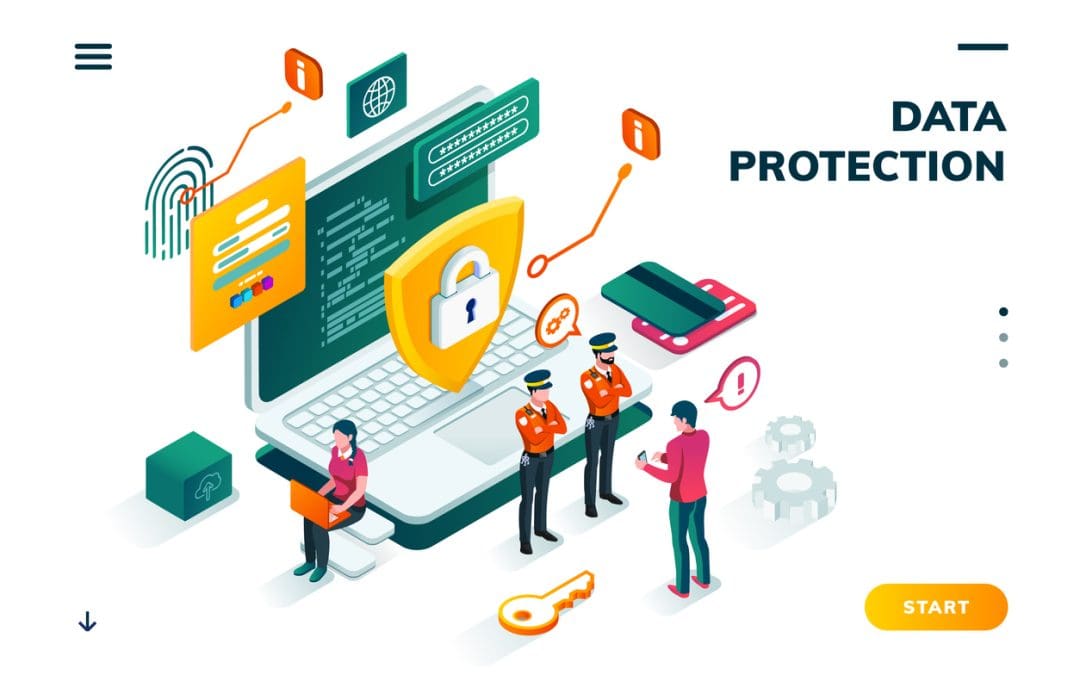How Compliance Management Software Helps Ensure Information Security
All organizations need to manage and protect their valuable data and information assets. This is crucial for the successful and safe operation of the business. Companies must safeguard data, protect consumer privacy, preserve brand reputation, and avoid liability. Information security is the protection of information by people and organizations in order to keep information safe for themselves, their business, and their clients.
Standards have been created to provide a common set of reference points used to evaluate whether an organization has processes, procedures, and additional controls in place that meet an agreed minimum requirement. Compliance with standards and frameworks gives third parties such as customers, suppliers, and business partners confidence that the standard is being met. Security standards and frameworks are collections of best practices created by experts to protect organizations from threats and help improve their overall security. They are generally applicable to all organizations, regardless of their size, industry, or sector. Regular audits can help ensure employees stick to security practices and can catch new vulnerabilities.
Before taking a closer look at these standards and frameworks, let’s examine the difference between a standard and a framework. A standard is internationally recognized as the best-known practice that defines the steps and procedures involved in getting a task done. A business can create its own set of rules to be adopted by the organization or adapt to certain standards that are recognized internationally. A framework, on the other hand, refers to the structure underneath or beyond a system. It provides the system’s outline, not the method to be adopted to implement the system. So businesses can adopt a framework in any way they choose as long as they meet the requirements of that framework. Companies can be independently audited against a standard, but not against a framework. Using a framework helps you meet a standard.
Taking steps to protect information from data breaches and other disruptive security threats to a business and to consumer data is critical. Data breaches are time-consuming, expensive, and bad for business. With security standards and frameworks in place in an organization, a company reduces the risk of internal and external attacks, while also providing stakeholders peace of mind.

Let’s take a closer look at 9 of the top security standards and frameworks available to organizations.
The Cybersecurity Maturity Model Certification (CMMC) is a premium and upcoming standard. It is replacing NIST 800-171 and NIST 800-53 and it was created by the Department of Defense. CMMC applies to anyone in the defense contract supply chain and is a unifying standard for the implementation of cybersecurity, reducing digital risk and enhancing our national security.
CMMC 2.0 was launched as a comprehensive framework to protect the defense industrial base from cyberattacks increasing in frequency and complexity. The standard requires reinforced cooperation between the Department of Defense and the industry in addressing evolving cyber threats. It cuts red tape for small and medium-size businesses and sets priorities for protecting the DoD information. It is designed to protect sensitive unclassified information that is shared by the Department with its contractors and subcontractors. One of the primary goals of the updated CMMC 2.0 is to maintain public trust through high professional and ethical standards.
Certifiers to the standard are respected for providing flexible and supportive certification and training services that are technically advanced and meet the needs of organizations in all industries, no matter the size.
The Health Insurance Portability and Accountability Act (HIPAA), also known as the Kennedy–Kassebaum Act, is a federal law enacted in 1996. The federal law required the creation of national standards to protect sensitive patient health information from being disclosed without the patient’s consent or knowledge. This United States legislation provides data privacy and security provisions for safeguarding medical information.
The US Department of Health and Human Services issued the HIPAA Privacy Rule to implement the requirements of HIPAA. The HIPAA Security Rule protects a subset of information covered by the Privacy Rule. The Privacy rule contains standards for individuals’ rights to understand and control how their health information is used. It strives to ensure that an individual’s health information is properly protected while allowing the flow of health information needed to provide high-quality healthcare while protecting everyone’s health and well-being.
The Security Rule protects all individually identifiable health information a covered entity creates, receives, maintains, or transmits in electronic form, known as electronic-protected health information, or e-PHI. Protected health information that is transmitted orally or in writing is not protected by the Security Rule. Organizations must comply by ensuring the confidentiality, integrity, and availability of all e-PHI.
ISO 27001 is the international standard that describes the requirements for an information security management system. It provides the requirements for establishing, implementing, maintaining, and continually improving an information security management system within the context of the organization. It is designed to help them manage their security practices in one place, consistently and cost-effectively.
ISO 27001 can be monitored through a competency management program. Not only does this standard provide organizations with the necessary know-how for protecting valuable data and information, but it also provides certification which proves to customers and partners that it safeguards its data. ISO 27001 is a process for managing risks through the implementation of security controls.
The primary goal of ISO 27001 is to protect the confidentiality, integrity, and availability of information. Only authorized persons have the right to access information and change the information. The information must be accessible to authorized people whenever it is needed.
Payment Card Industry Data Security Standard (PCI DSS) is an industry requirement for securing credit card holder data all around the world. PCI is established by the Payment Card Industry Security Standards Council (PSI SSC) which is made up of American Express, Discover Financial Services, JCG International, MasterCard Worldwide, and Visa Inc. Any organization that processes, stores, or transmits credit card data of their customers must be PCI compliant.
In order for a business to be PCI compliant, it must follow more than 300 security checks. Although compliance is not required by law, organizations could be fined or penalized by the PCI SSC for noncompliance.
Service Organization Control 2 (SOC 2) compliance is a component of the American Institute of CPAs’ (AICPA) Service Organization Control reporting platform. Its goal is to ensure security, availability, processing integrity, confidentiality, and customer data privacy across systems. A SOC 2 audit checks the policies, procedures, and systems in place to protect information across these five categories.
SOC 2 compliance helps providers show that privacy, confidentiality, and integrity of customers’ data are a priority. SOC attestation is an audit report that attests to the trustworthiness of services provided by a service organization.
National Institute of Standards and Technology (NIST 800-53) defines the minimum baseline of security controls for all U.S. federal information systems. It provides a unified framework, meaning that the U.S. Government has a common and effective risk management framework. This does not include agencies that deal with national security.
NIST 800-53 provides a catalog of controls to support the development of secure and resilient information systems. Confidentiality, integrity, and availability are established when these controls are in place. Operational, technical, and management safeguards are used to maintain a secure foundation for information systems.
National Institute of Standards and Technology (NIST 800-171) governs Controlled Unclassified Information (CUI) in Non-Federal Information Systems and Organizations. It is a subset of NIST 800-53. This special publication recommends requirements for protecting the confidentiality of CUI. This could include patents, technical data, or information relating to the manufacture or acquisition of goods and services. The recommended requirements of this standard must be implemented by defense contractors in order to demonstrate adequate security in place to protect the covered defense information included in their defense contracts.
Contractors for the Department of Defense, universities, and research institutions that receive federal grants, or organizations providing services to government agencies are all required to be compliant with NIST 800-171 if they process or store sensitive unclassified information on behalf of the US government. This best practice of cybersecurity strengthens the entire federal supply chain. Even though CUI is not considered classified information, breaches of this sensitive data can still lead to negative security and economic consequences, such as loss of contracts, lawsuits, fines, and reputational damage.
The Center for Internet Security controls (CIS 18) is a list of 18 high-priority and highly effective key defense actions that organizations should implement to block or mitigate known attacks. This framework has best practices that are indispensable to organizations both large and small in preventing the majority of cyberattacks. The security controls give clear, actionable recommendations for cyber security. The controls are designed so that automation can be used to implement, enforce, and monitor them.
The CIS 18 controls are developed by a community of IT experts who applied their first-hand experiences as cyber defenders to create this framework. They come from a wide range of industries such as retail, manufacturing, healthcare, education, government, and defense. The most recent release of the CIS controls, version 8, was published in 2021. The list continues to be published in order of importance, however, the controls are now task-focused and combined with activities. The term “safeguards” is now used instead of the term sub-controls.
The Shared Assessments Program’s Third Party Risk Management (TPRM) Framework is designed to provide guidance for organizations seeking to develop, optimize and/or manage Third Party Risk by incorporating a wide range of best practices into their risk management program. This program helps organizations keep current with regulations, industry standards, and guidelines, as well as the current threat environment.
Compliance Management Software Helps Ensure Information Security
Compliance management software will manage policies and map compliance and security frameworks. It preserves privacy while increasing efficiency for your organization. An automated process maintains a tidy and organized record of data that will display a company’s compliance and allow them to make more informed decisions.
CABEM Technologies provides practical solutions that are audited to industry standards and security frameworks. CABEM provides a full suite of cloud infrastructure and migration solutions. We employ senior cloud engineers and seasoned systems architects who can assist in developing a cloud adoption strategy tailored to any organization’s unique needs. Our security division accurately identifies risks for the three major security variables: software, hardware, and people. We assess your business’s susceptibility to security breaches and develop mitigation procedures accordingly. CABEM’s Competency Manager helps companies produce the data needed for an audit.
Whether a business is looking to transition existing systems to the cloud or needs custom-built infrastructure from the ground up, CABEM’s solutions will leverage the full power of any of the major cloud service providers guaranteeing performance, scalability, and security. Contact us to get started.

